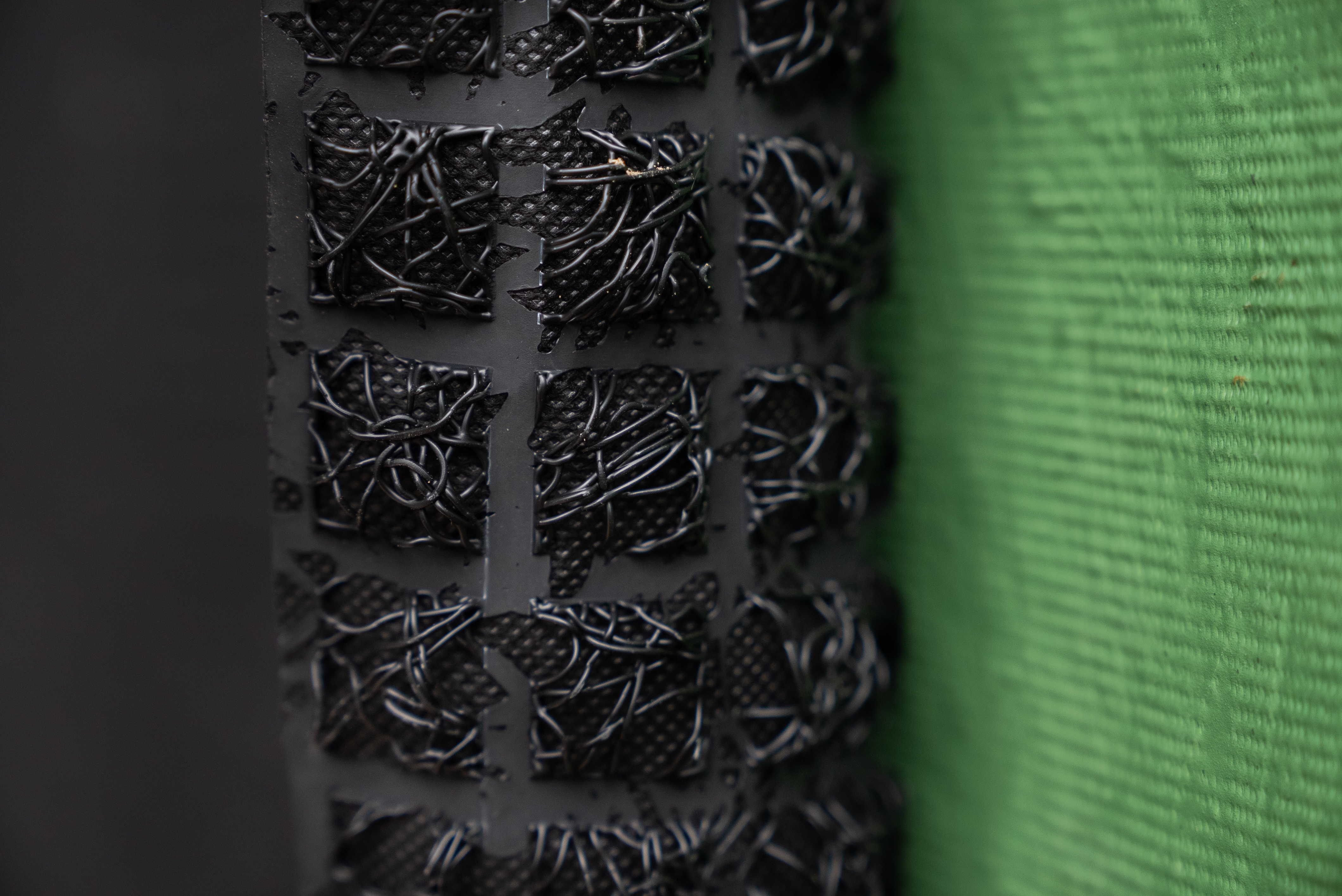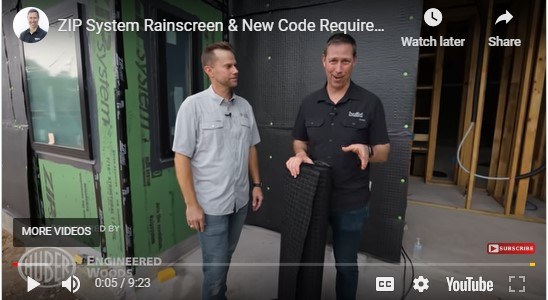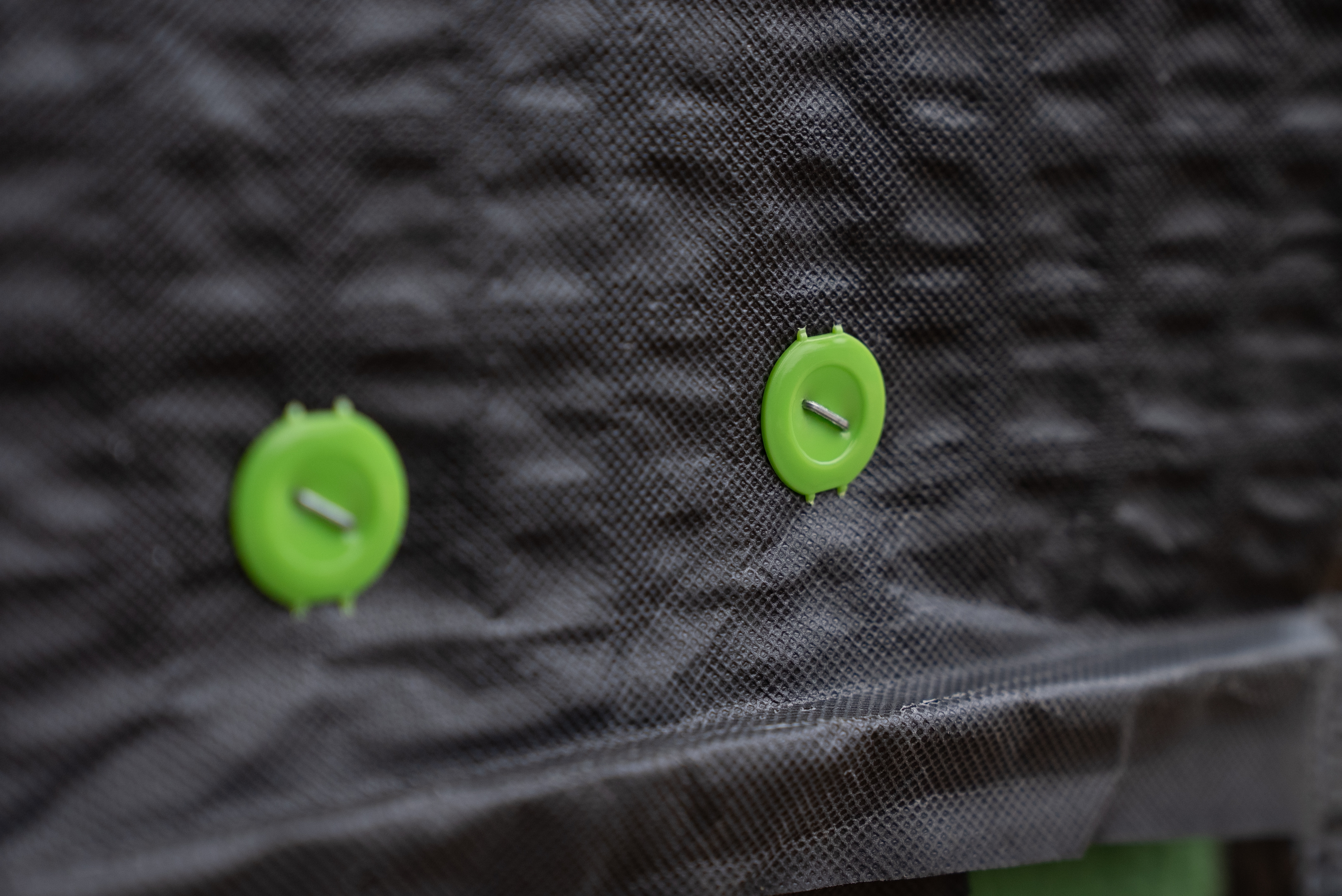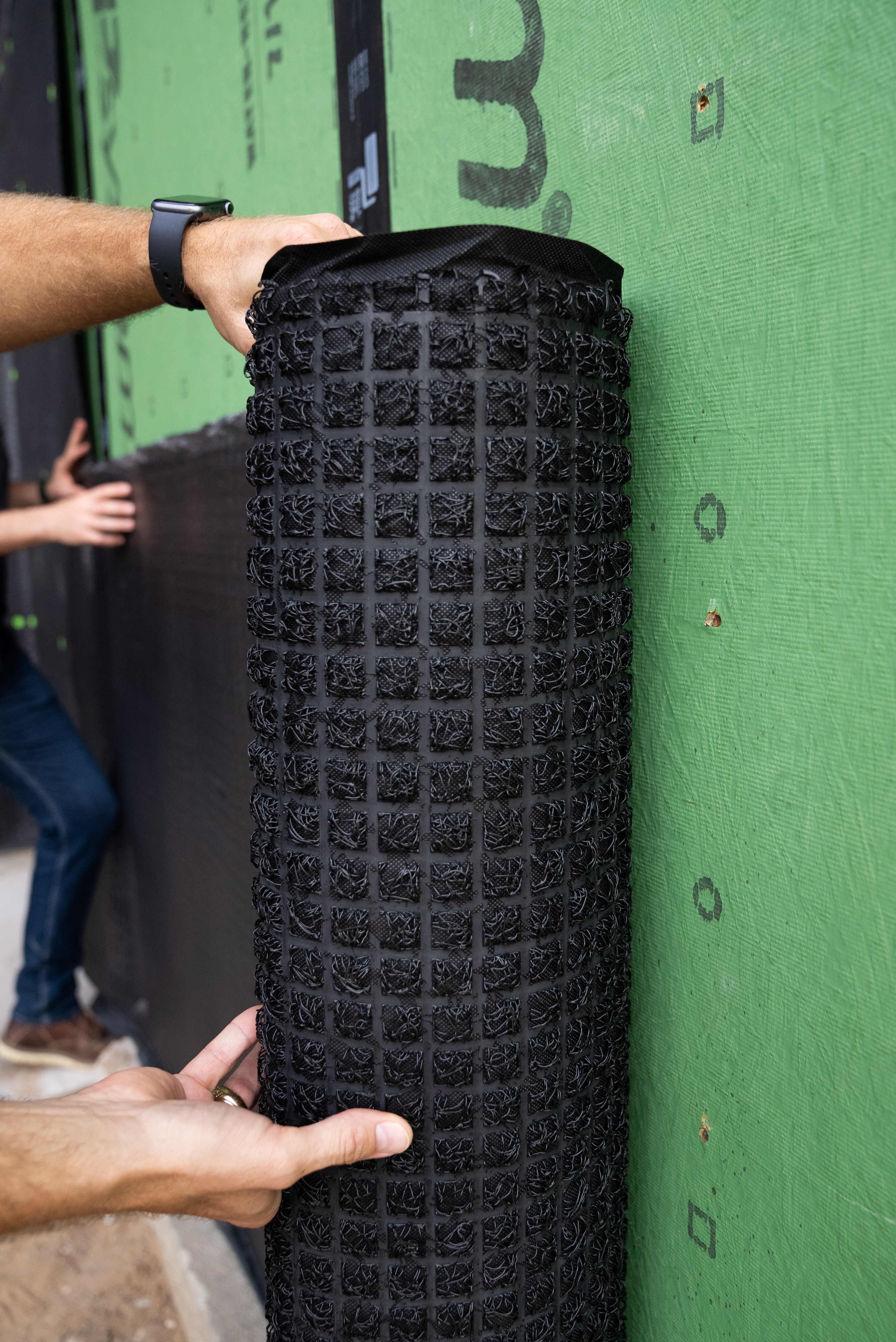
Elevate Your Building's Performance: A 9-Question FAQ on ZIP System™ Rainscreen
3 Min Read March 25, 2024
ZIP System™ has added another addition to the product line, ZIP System™ rainscreen. ZIP System rainscreen is an entangled mesh drainage system with a fabric covering on the outside. Add another line of defense to your enclosure with ZIP System rainscreen. Below are 9 common questions about ZIP System rainscreen you should know.
But first, check out what our friends at the Build Show Network have to say:

Why should I use ZIP System™ rainscreen?
ZIP System rainscreen can improve the drainage efficiency of a wall assembly by offering a capillary break between the cladding and the sheathing. Adding ZIP System rainscreen to your assembly allows ventilation to occur which can improve the drying potential. With stucco, adhered stone, and other adhered claddings, ZIP System rainscreen acts as the code-required secondary water-resistive layer.
DRAIN and DRY – probably two of the MOST important words in Building Science - and a rainscreen does both! Steve Baczek, Architect. Boston, MA
What fasteners are required for installation?
Plastic cap (button cap) staples or plastic cap nails are required to install ZIP System rainscreen. They should be a minimum of 5/8” long and installed every 24 inches in the vertical and horizontal direction.

How should I install ZIP System rainscreen?
Install ZIP System rainscreen horizontally starting at the bottom of the wall. The 3-inch selvage edge should overlap the previous courses of ZIP System rainscreen. The selvage edge should hang freely over any flashings. ZIP System rainscreen should be installed with the drainage mesh facing the sheathing panel. Note the “This Side Down” and “This Side Out” markings.
What is the exposure limit for ZIP System rainscreen?
ZIP System rainscreen can be exposed for up to 90 days.
Can ZIP System rainscreen act as a primary water-resistant barrier?
No. ZIP System rainscreen does not replace the need for a standard water-resistive barrier. For adhered cladding, it can act as a second layer of WRB.
Is ZIP System rainscreen compatible with any wall cladding?
ZIP System rainscreen can be used with a variety of wall claddings: stucco, adhered stone, lap siding, fiber-cement siding, metal siding, and wood siding. Adhered claddings such as stucco and adhered stone require the vertical seams of the rainscreen to be taped with ZIP System flashing tape before applying mortar or basecoat.
Why would I use ZIP System rainscreen with stucco?
ZIP System rainscreen provides a ¼-inch gap between the stucco and the ZIP System sheathing. In some areas, this is a code requirement. Whether it’s a requirement or not, the ¼-inch gap provided by ZIP System rainscreen can be beneficial in any stucco assembly. In addition, ZIP System rainscreen can act as the secondary water-resistive barrier for wall assemblies that use stucco when required. Check your local code requirements.
Check out this tech tip.
Can I fold the selvage edge of ZIP System rainscreen to act as a pest screen?
No. Doing this would limit the drainage and ventilation provided by the rainscreen. Please keep in mind, this part should not be taped either. Along the bottom of the wall, the selvage edge can be removed.
What are the size and dimensions of ZIP System rainscreen?
One roll of ZIP System rainscreen covers 260 square feet. When placed on the wall, it is 48 inches in height, 65 feet in length, and ¼ inch thick.

How do I get ZIP System rainscreen?
Reach out to your local sales representative for more information on how to get your hands on ZIP System rainscreen.
For more information, check out our technical library or contact the tech team.

